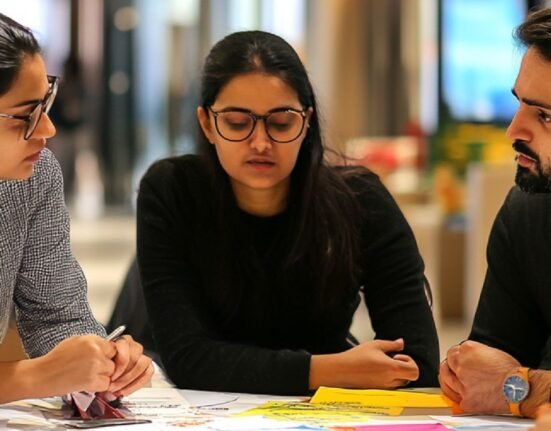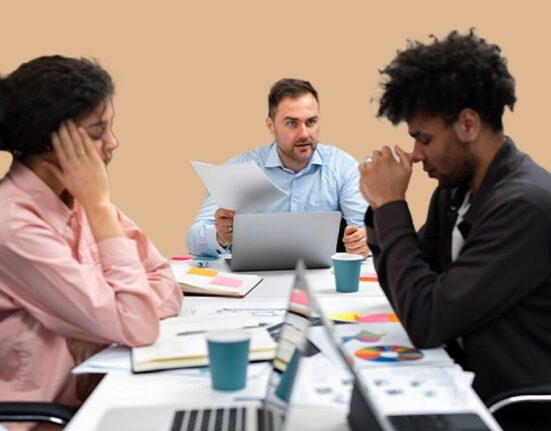Let’s face it: our workplaces are beautifully messy tapestries of people. Different backgrounds, unique ways of learning, diverse abilities, and a kaleidoscope of experiences. But here’s the snag: when we roll out the same old training for everyone, we’re not weaving that tapestry tighter – we’re leaving threads behind. Talented people get missed, potential stays locked up, and honestly? The whole organisation suffers.
What if training didn’t just deliver information, but truly ignited potential for everyone? That’s where Universal Design for Learning (UDL) steps in. It’s not just a tweak; it’s a whole new mindset for building truly inclusive training from the ground up.
Read More: Cultural Kaleidoscope: Learn about Cross-Cultural Psychology
UDL: Proactive Design, Not Reactive Fixes
Developed from architectural accessibility principles (like curb cuts benefiting all pedestrians) and advanced by education researchers at CAST, UDL fundamentally rethinks learning design. Instead of retrofitting solutions for individual needs (“This doesn’t work for you? Let’s adjust.”), UDL starts with a core truth: Learning differences aren’t exceptions—they’re the norm. UDL’s power lies in anticipating human diversity upfront. It embeds flexibility and choice into the learning experience through three intentional pillars:
1. The “Why” – Sparking That Fire (Multiple Means of Engagement)
You can’t force anyone to be motivated. This is all about lighting a spark. How? By giving people a real say in their own learning. Maybe some folks thrive in a lively, real-time workshop. Others would much rather tackle a self-paced module at 10 PM when it’s quiet. UDL says: offer both. It’s about making training matter. Connect it directly to the real problems people are trying to solve in their jobs. Tie it to their career goals and personal values. To make it enjoyable, incorporate some gamification. Use a captivating story to help it stick. The key is to create an atmosphere where people can collaborate, ask “reckless” questions, and even fail without fear of repercussions. After you figure out what drives people, learning becomes a decision rather than a task.
Read More: How to Define Success for Yourself: The Power of Personal Goals
2. The “What” – Serving the Buffet (Multiple Means of Representation)
We all take in information differently. Some of us need to see it. Some need to hear it. UDL’s answer is brilliantly simple: serve the content on a buffet platter, not a pre-set plate. That means any key information is served up in multiple ways at once:
- Visuals: Videos, infographics, charts, and diagrams.
- Readers: Clear written materials, summaries, and—most importantly—complete transcripts for each video or podcast.
- Ears: Podcasts, recordings, and concise spoken explanations.
- Doers: Simulations, practical exercises, and interactive elements you can click and change.
The best part is that using accessibility fundamentals like visual description, transcription, and captioning benefits more than only our colleagues with disabilities. Watching a video in a noisy open office, following a transcript, or having to fast scan a film to discover one important point are all aided by it. For our worldwide staff, this means meticulously translating and making sure the examples are suitable for their culture. Respect is more important than simply obeying commands.
3. The “How” – Let Them Show You (Multiple Means of Action & Expression)
If taking a test or giving a presentation is the only way to demonstrate that you have learnt anything, then we are only witnessing a limited portion of knowledge. “How can you show me what you possess in a way that lets your strengths shine?” is a superior question posed by UDL. The answer is to provide options. Let people choose how to demonstrate their mastery:
- Write a reflection, report, or build a portfolio.
- Talk it out in a discussion, presentation, or by teaching a colleague.
- Build something creative—a video, a model, a visual proposal.
- Do it for real with a practical demonstration or a live project.
- Work alone or with others on a group project.
Read More: How Knowledge Transforms Our Lives
The Reason This Isn’t a “Nice-to-Have” Anymore
With the increasing diversity of our workplaces, traditional training methods are failing vast segments of our talent.
- Neurodiversity: Hyper-focus, pattern recognition, and creative problem-solving are just a few of the amazing, distinctive strengths that coworkers with ADHD, autism, or dyslexia have. They tend to process information in ways that are suppressed by standard training, though. For them, the inherent flexibility of UDL is their lifeline.
- Diversity in Culture and Language: Disparities in communication styles, language proficiency, and even expectations for the way learning should occur can create invisible barriers. Naturally, UDL’s wide range of options and commitment to accessibility help to close these gaps.
- Diverse Backgrounds: Veterans, recent graduates, and career-changers all have somewhat distinct experiences. Others require calm seclusion, while others learn best when they bounce ideas off others. They are all respected by UDL’s emphasis on choice.
Read More: Emotional Labour in the Workplace: The Hidden Cost of Smiling for a Paycheck
The Payoff: This is a Win-Win
When you do this right, the benefits are felt everywhere.
- For people: They are much more confident, less irritated, and more involved. Their strong sense of belonging is fuelled by their experience of being noticed and appreciated. Here, students may see a genuine future for themselves and acquire skills in a way that truly suits them.
- For the business: Training completion rates and knowledge retention suddenly have real significance. People use their new skills on the job. Morale and satisfaction improve, which means we keep our best people. We get better innovation from all those different perspectives and build a culture that’s genuinely strong and inclusive. Plus, we spend a lot less time scrambling for last-minute individual fixes.
Read More: Improving Workplace Satisfaction, Motivation and Productivity Using Positive Psychology
Making It Happen: Maintain Humanity and Simplicity
This doesn’t have to be too much to handle. Beginning here:
- Ask, Don’t Assume: Survey your team. Talk to them. What’s worked in the past? What’s been a nightmare? What are their real constraints? Run small focus groups with a diverse mix of people and really listen. This isn’t a one-time thing; keep the conversation going.
- Build With People, Not For Them: Involve folks from different employee resource groups and committees in actually creating and reviewing the materials. Their lived experience is your secret weapon for spotting what’s unclear, insensitive, or just plain missing. This also builds incredible ownership and buy-in.
- Mix and Match Delivery: Use a blend. In-person sessions for hands-on practice and deep conversations. Live virtual calls for connecting remote teams. Self-paced online modules for flexibility and review. And please, make sure every single tool and platform you use is accessible to everyone from the get-go.
- Support the Journey: The learning doesn’t stop when the video ends. Offer mentoring. Create a simple, searchable library of resources—quick guides, cheat sheets, job aids. Make sure people know where to go for help long after the “training” is officially over.
- Measure What Actually Matters: Look beyond the completion certificate. Are people actually using what they learned? Ask people who typically feel excluded for their honest opinions. Keep tabs on who is taking part and their emotions. Utilise those empirical facts to continuously adjust and enhance. Remain modest and continue to refine.
The Bottom Line
This is bigger than training. It’s about building a workplace where everyone can actually do their best work. By weaving these principles of choice and flexibility into everything we do, we don’t just create better learners. It all comes down to building a real culture. The kind of place where people are free to be themselves and know, deep down, that they belong. That’s the secret sauce. When folks feel that genuine respect and appreciation, amazing things start to happen.
They’re not afraid to be different, to offer a wild idea. And that’s where you get the real magic—the breakthrough ideas that change everything. You get smarter answers to tough problems because every single voice is in the mix. But maybe the best part? You build a real, deep-down loyalty. The kind you can’t manufacture. Look, getting here isn’t easy. It takes real work and a conscious choice to break the mould. But honestly, if we’re not trying to build a place where every person can thrive and feel like they truly matter… then what are we even doing here?
References +
CAST. (2018). Universal design for learning guidelines version 2.2. CAST. http://udlguidelines.cast.org
Meyer, A., Rose, D. H., & Gordon, D. (2014). Universal learning design: Theory and practice. CAST Professional Publishing.
Rose, D. H., & Dalton, B. (2009). Learning to read in the digital age. Mind, Brain, and Education, 3(2), 74–83. https://doi.org/10.1111/j.1751-228X.2009.01057.x
Story, M. F., Mueller, J. L., & Mace, R. L. (1998). The universal design file: Designing for people of all ages and abilities. North Carolina State University, Centre for Universal Design.













Leave feedback about this